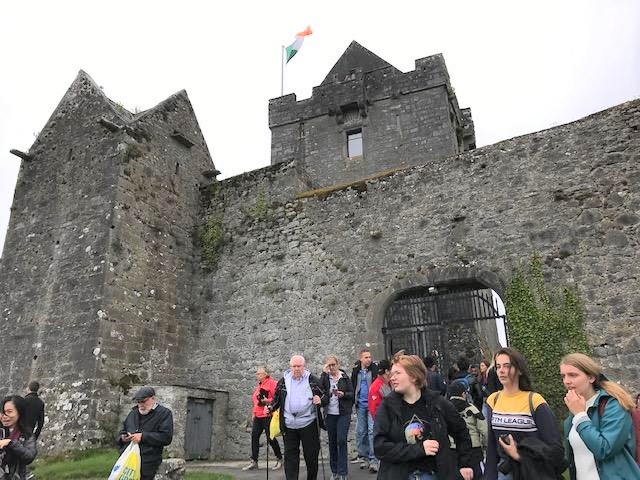Ireland’s incredible Cliffs of Moher

By Wendell Gaa
Think of Ireland, and often the iconic things which may instantly emerge in your mind are leprechauns, pots of gold at the end of a rainbow, pubs, and green countryside, which is indeed everywhere.
Natural attractions are another gift which the Emerald Isle is truly abundantly blessed with. One such site which I recently visited was the spectacular Cliffs of Moher located along Ireland’s western coastal region.
As I’ve now embarked on a new educational chapter in my life, pursuing a Master of Law (LLM) degree in International Migration and Refugee Law here at the National University of Ireland (NUI) in Galway, I decided to make use of some spare time in exploring the surrounding area. Galway is some 2-3 hours by land from the capital city of Dublin which is located on the eastern coast almost exactly opposite.
I booked online to join a shuttle bus tour that would transport us from Galway to the Cliffs of Moher. The weather was quite overcast and rainy, although our jolly Irish tour guide told us it was typical everyday Irish weather to possibly experience four seasons within one day! This gave us the hope that the skies would be a bit more pleasant, hence our guide coaxed us to retain an optimistic outlook throughout our road trip.
The scenery which greeted us was reflective of Ireland’s reputation for its world-renowned greenery. I was pleased with the sight of rolling hills, farm meadows, and plenty of sheep roaming the countryside. We stopped for a few minutes to take photos at the Dungaire Castle, a historic site which dates all the way back to the 1520s. I could easily picture myself in an actual medieval-era Europe setting, replete with kings, lords, and knights, exactly what one would see in a Game of Thrones episode!

We then went on to travel through to Ireland’s Burren region along what is known as the country’s Wild Atlantic Way. On both sides of our shuttle we could see limestones and cliffs covering the landscape. What was most interesting to me was seeing oddly-shaped stone markings which were described by our guide as tombstones marking actual burial sites dating all the way back to pre-medieval times. Though he said there was no way to prove whether or not these “burial sites” were genuine, that only added to the intrigue of ancient Irish history for me.
As we were nearing the Cliffs of Moher, our guide warned us that there have been known deaths occurring at this popular tourist attraction, some of which have come in the form of careless visitors who were foolish enough to walk outside of the marked paths to the viewing sites of the cliffs attempting to get a good selfie shot, only to fall fatally along the edges. As the weather conditions were windy, we were also warned to hold on tight to our mobile phones as the winds could be strong and unpredictable to the point where our devices could possibly fly out of our hands.
We heeded those warnings, and thankfully we all got to safely walk around the viewing paths to get a real close-up view of the cliffs, which have been awarded the status of UNESCO Global Geopark. The skies were still cloudy and slightly overcast, but visibility of the cliffs themselves was still clear, and according to our guide, we could count ourselves quite fortunate given that blue skies are a rarity anywhere throughout Ireland. There have been days in which visitors come to the cliffs only to experience practically zero visibility due to fogginess, which thankfully didn’t happen when we were there.
Seeing the Cliffs of Moher facing the Atlantic Ocean is a definite highlight of any trip to Ireland. The cliffs get their name from a ruined fort called “Mothar” which was destroyed in the Napoleonic wars. I was in awe to learn that these cliffs stretch five miles and stand 700 feet tall altogether. One historic building alone overlooks the cliffs, O’Brien’s Tower, which was built in 1835 by Cornelius O’Brien to serve as a viewing point for tourists visiting the cliffs. For a fee, visitors can still view the cliffs from the top of the tower.
Wildlife lovers will also be glad to know that these cliffs are home to unique aquatic bird species such as the Puffin. A fun fact for movie aficionados such as myself is that the popular films “The Princess Bride” and “Harry Potter and the Half-Blood Prince” were both shot here.


© The FilAm 2019










